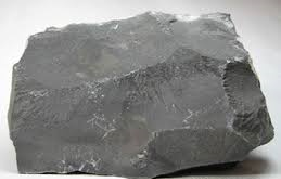Volcanic Topography
It includes both positive and negative relief features. the high or elevated relief features comprising of hills, mountains, cones, plateaus or upland plains are some of the examples of positive relief feature while the low lying relief features like craters, calderas, tectonic depression, etc.
Positive relief features --- These features are formed due to both quiet and explosive volcanic activity and some of which are as follows.
Driblet cones – The most acid lavas often give rise to quite small conelets and are known as driblet cones.
Cinder cone --These are volcanoes of the central type of eruption, steep sides with uniform slops of 30 to 40.
Lava cone – These are built up of lava flows, due to heaping of lava during quit type of eruption. it is also known as plugs dome or lava.
Composite cone --- These are made up alternatively of pyroclastic material and lava. due to rude stratification, they are also known as Stratovolcanoes.
Shield volcanoes— These are made up of lava alone and due to a quiet type of eruption whereby piling up of flow after flow of fluid lava a rounded dome-like mass is produced.
Spatter cone – Small cones formed on lava flows where breaks occur in the cooled surface of the flow allowing hot gases and lava to be blown out.
Volcanic plateau -- These are formed because of fissure type of eruption.
Negative relief features –
Crater – This is a depression located at the summit of the volcanic cone.
Calderas – Sometimes because of the violent explosion the entire central portion of the volcano is destroyed and only a great central depression, named a caldera remains;. The caldera may also be formed due to erosion and enlargement of the crater.
Lava tunnels – The more mobile lavas of basic composition when erupted on the surface in the form of flows quickly consolidate and a solid crust while the interior may still remain fluid . under such conditions the enclosed fluid lava drains out through some weak spots lying at the periphery of the flow forming what is known as lava tunnel.
Cone –in a cone – After an explosion destroys an existing crater a new built smaller cone with its own crater is built up . this is known as a cone in cone topography.
Explosion pits gaseous are also negative relief features of volcanoes.
Volcanic products –
. Gaseous products
. Liquid products
. Solid products.
The most important constituent of volcanic gases is steam. it forms nearly 90% of nitrogen and SO2and smaller amount of hydrogen, carbon monoxide, sulfur, and chlorine. the density of magma and molten lava is reduced by the presence in the total gas content .the other chief gases in the order of abundance are CO2, dissolved gases.
Liquid products – Liquid emission from a volcano are known lavas. lavas of acidic composition are more viscous and less mobile than highly fluid basic lavas. fluid lava results in calm eruptions as they allow the dissolved gases to escape freely. In viscous lava, the gases do not escape freely. they frequently build up an internal pressure to produce a violent eruption.
Solid products – Gases and liquid lavas, volcanoes eject solid rock fragments of various size. these rock fragments are thrown out by the escaping gases during violent eruptions .when fragments of very viscous lava are blown off into the air they solidify quickly and fall to the ground as pyroclasts. The solid rock fragment produced during a volcanic eruption is called pyroclasts. Depending on the size, the pyroclast is divided into the following groups.
.Volcanic blocks – Bigger angular fragments of dead lava are called volcanic blocks. They are formed when large pieces of solidifies lava are blown off during an explosion.
Volcanic bombs – Bigger and somewhat rounded or spindle-shaped fragments are called volcanic bombs. They may be up to the size of the football. Volcanic bombs are clots of live lava which generally solidify before reaching the ground.
Lapilli or cinders – The rock fragments up to the size of gravels or peas are called lapilli or cinders. Normally their size ranges between 4 to 32 mm.
Ash – Particles that range in size between 0.25 to 4.0 mm. are called volcanic ash.
Dust-- The includes very fine particles. Their size is less than 0.25 mm.
Tuff – rocks made up of ash and fine ash are known as tuffs and the welded tuffs are known as ignimbrite.
Agglomerate – Pyroclastic rocks consisting mainly of fragments larger than 20mm in diameter are known as agglomerates.
 | |
| Agglomerate |
Porous or spongy – Masses of solidified frothy lava is known as pumice or scoria. but scoria is having a little dark color and coarse texture than that of pumice.
 | |
| porous and spongy |
Spilitic lava – These are albitic (soda rich ) lava and it produces pillow structure.
Nuee ardent – An incandescent cloud of gas and volcanic ash, violently emitted during the eruption of pelean types of volcanoes.Fumaroles -- These are fissures or vents through which volcanic gases are ejected
fumaroles emitting sulfurous vapor are called solfataras and those which emit carbon dioxide and boric acid vapor are known as mofettes and saffoni.
Hot springs -- These are fissures through which hot water escapes. the water usually gets heated with increased temperature below may be magmatic or radioactive heat.
calcareous deposits formed from hot spring are known as travertine or tufa and similarly siliceous deposits are called siliceous sinter.





0 Comments